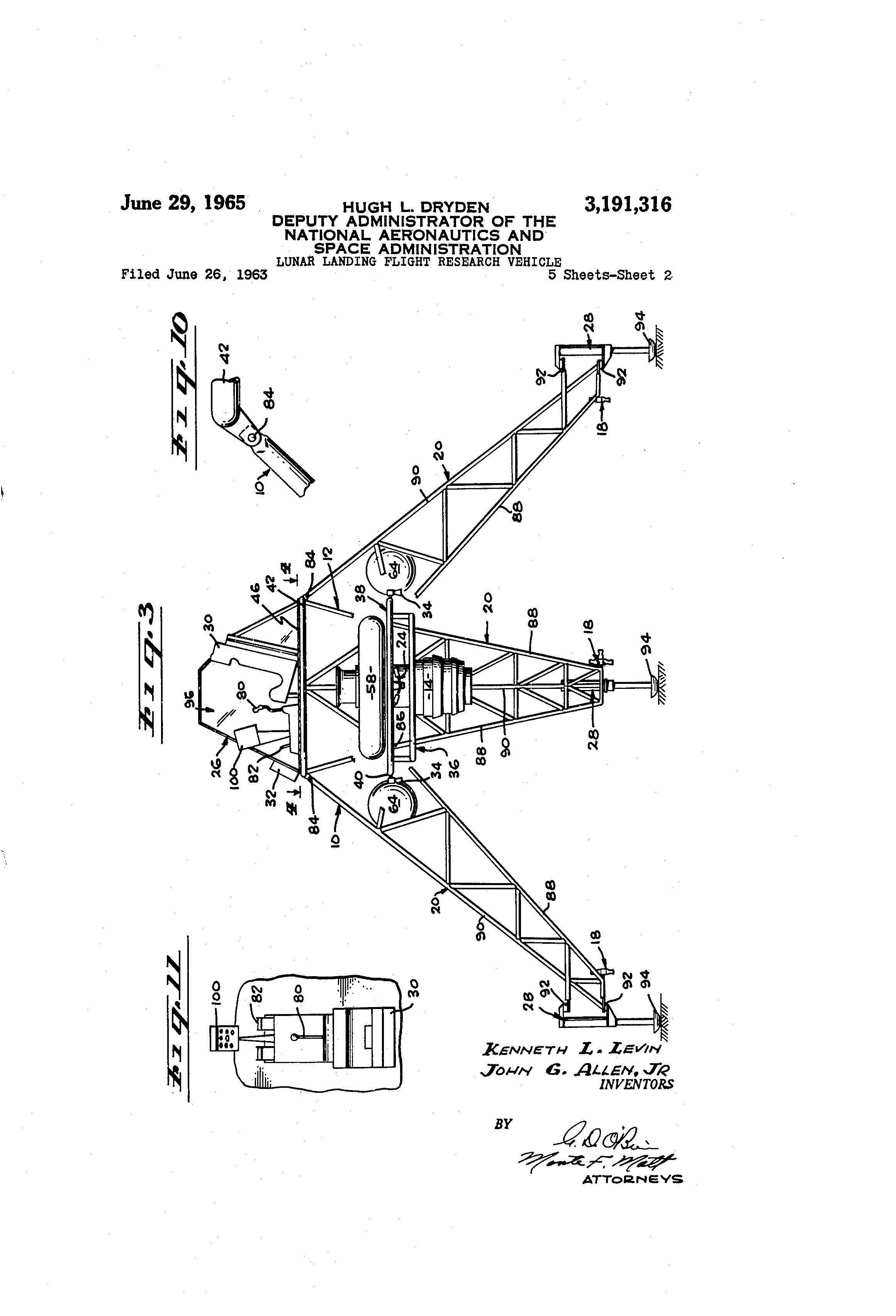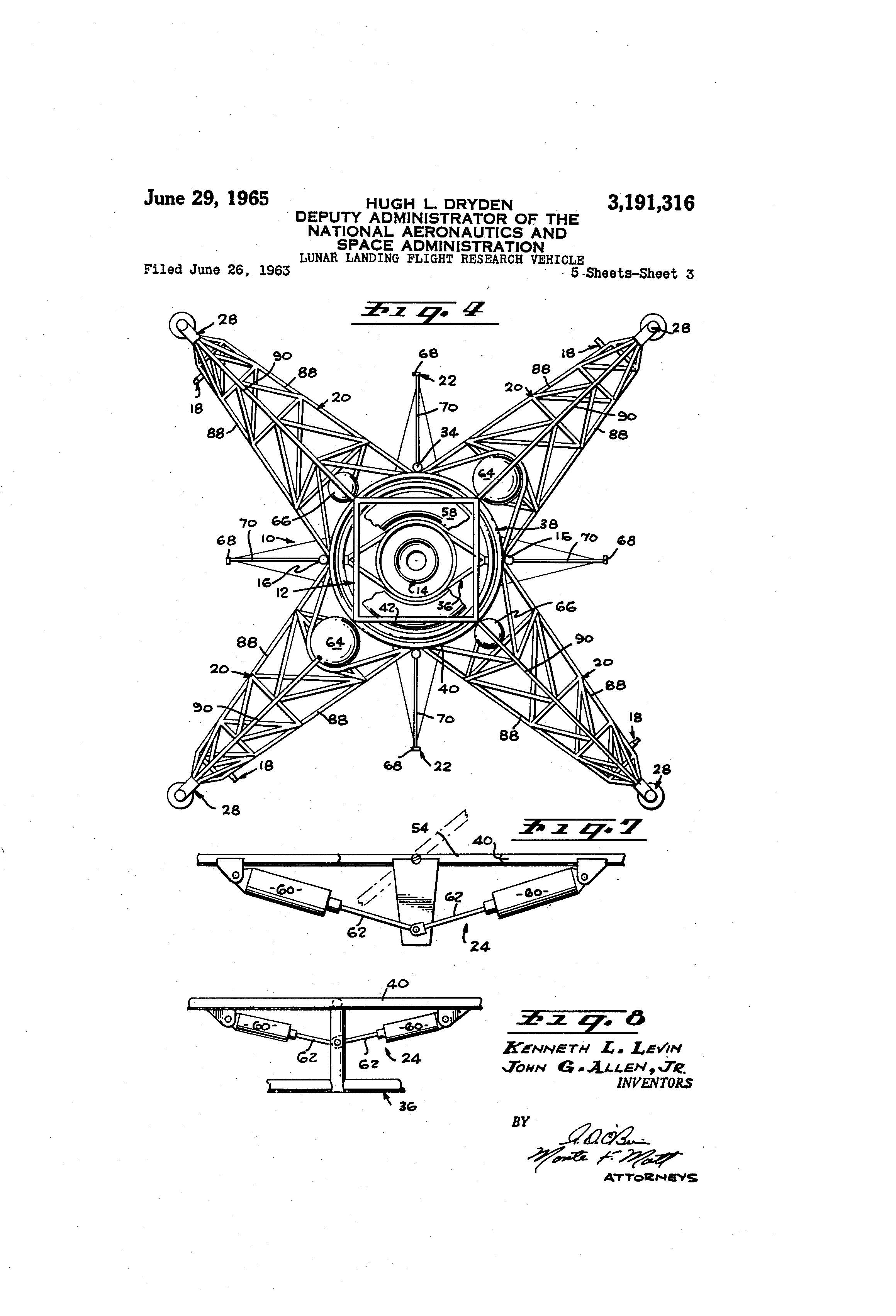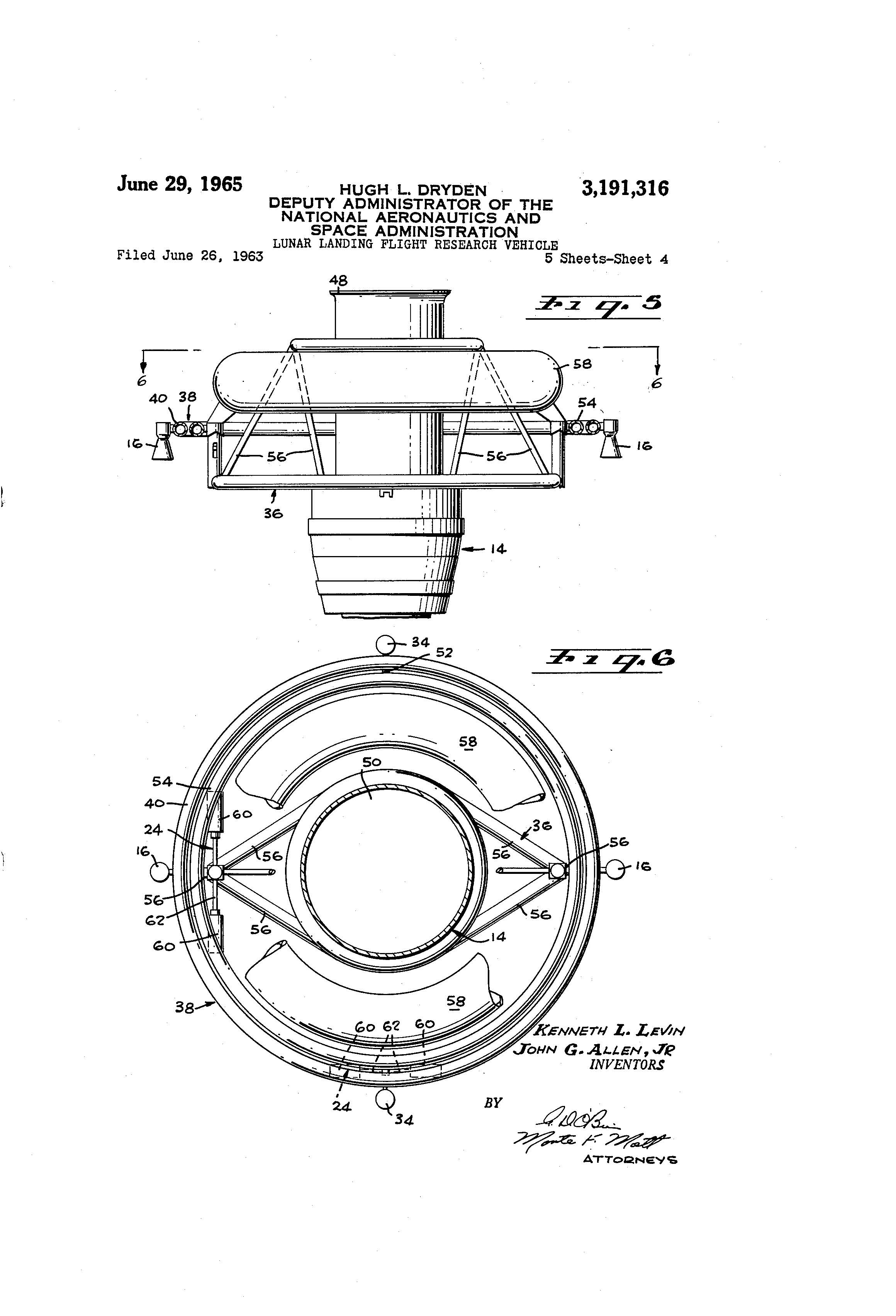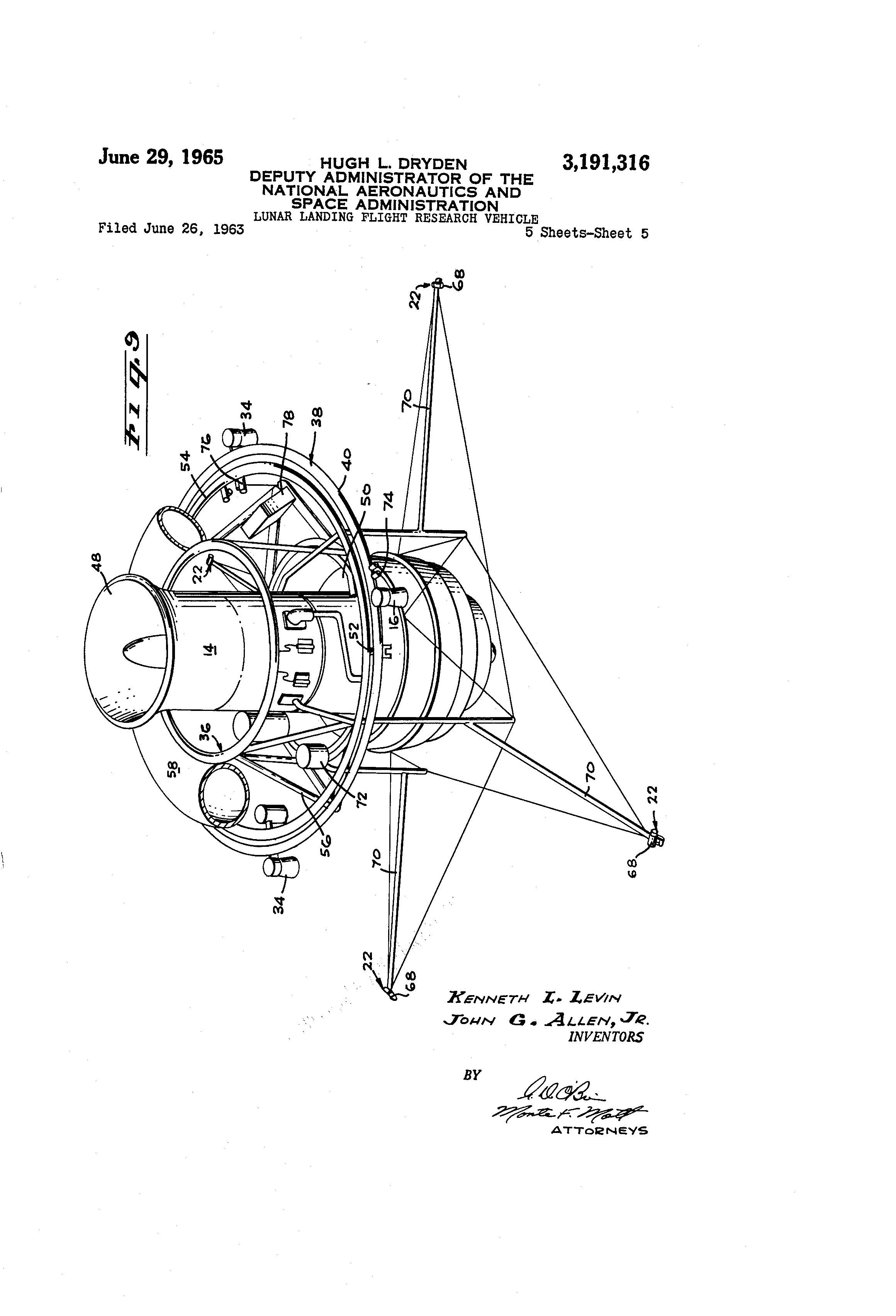Suiter Swantz IP takes a look back at past inventions and inventors with our Patent of the Day.
On this day in 1965, Hugh L. Dryden, the deputy administrator of the National Aeronautics and Space Administration, was granted U.S. Patent No. 3,191,316 for a LUNAR LANDING FLIGHT RESEARCH VEHICLE.
An excerpt from the patent states:
The invention described herein may be manufactured and used by or for the Government of the United States of America for governmental purposes without the payment of any royalties thereon or therefor.
This invention relates to a flight research vehicle employed for the purpose of simulating lunar landings Where gravitational influences are approximately one-sixth those on earth, and aero-dynamic forces are substantially non existent, and more particularly this invention relates to a lunar landing flight research vehicle which includes: (a) a main lift engine having more than an adequate amount of thrust to overcome five-sixths of the earth gravity, (b) main lift rockets for countering the remaining one-sixth earth gravity so that a realistic simulation of lunar approach, hovering and touchdown may be achieved, (c) vehicle attitude controls for controlling the the attitude of the vehicle, including vehicle tilt during horizontal translation which is a maneuver required of an actual lunar landing vehicle, (d) engine attitude controls for controlling the attitude of the engine so the latter is in a substantially vertical position at all times to properly counteract earth gravity, (e) landing gear structure which is so disposed as to provide a realistic lunar landing touchdown and which provides for avoiding vehicle capsizing during lateral translation and touch down, (f) safety and recovery system for recovering the vehicle pilot and vehicle with a minimum of harm and damage in the event catastrophic events occur which threaten either the pilot or vehicle or both and (g) a cockpit and cockpit display positioned on the vehicle so as to provide a reasonable representation of conditions occurring in a lunar vehicle. The foregoing structure and equipment when considered in combination is for the purpose of exploring and solving the hereinafter identified problems involved in making an actual lunar landing, and which will evaluate pilot ability and contribute to pilot training.
The lunar exploration program will encounter new and unusual environments which are unfamiliar and foreign to our presently developed knowledge of flight operations. Typical of the problems to be encountered is the lunar approach, hover and touchdown. For conventional air breathing aircraft a vast amount of information and knowledge is available, but for lunar landing craft no such information and knowledge exists.
Two characteristics of the lunar environment are basic to the design of a free flight vehicle which can simulate lunar landing trajectories on earth. First, the low lunar gravity, which is about one-sixth that of earth, and second, the lunar atmospheric pressure, which is about 10-13 mm. of mercury and causes no appreciable aerodynamic forces on the lunar landing vehicle. For realistic earth simulation, a free flight test vehicle should provide first a means of reducing the effects of earth gravity while preserving similarity of vehicle mass and moment of inertia, and second, a means of balancing aerodynamic forces so that the vehicle appears to operate in a vacuum environment. In providing this situation, the test vehicle should not itself introduce unrealistic side effects. This can be accomplished only be designing the research test vehicle in a manner so that the attitude of the thrust vector which balances earth gravity and aerodynamic drag can be adjusted independently of the attitude and motion of the basic vehicle. The response of the vehicle to attitude controls and rocket lift engines is then preserved and realistic flight situation can be simulated.
Because of the two aforementioned characteristics of the lunar environment, a number of problems are presented which require solution and which are: (1) control with no aerodynamic damping, (2) effects of low lunar gravity, (3) pilot position visibility, (4) control system characteristics, (5) determination of pilot landing display parameters and their instrumentation, (6) landing tip over problems due to low gravity, (7) control of vehicle translation, (8) control of lift rockets, (9) control of attitude rockets, and other problems of equal if not greater importance.
Suiter Swantz IP is a full-service intellectual property law firm, based in Omaha, NE, serving all of Nebraska, Iowa and South Dakota. If you have any intellectual property questions or need assistance with any patent, trademark or copyright matters and would like to speak to one of our patent attorneys please feel free to contact us.





